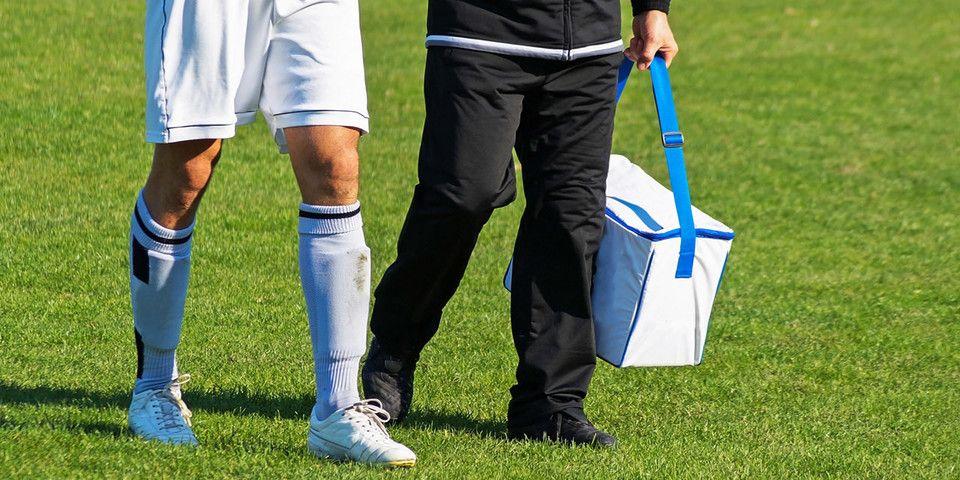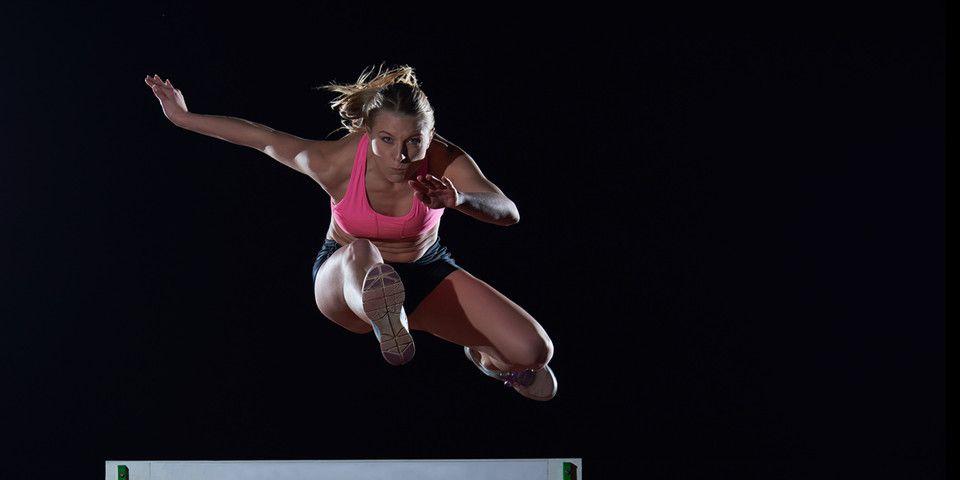Rothman Orthopaedic Institute Offers Specialized Treatment for Iliotibial Band Syndrome
The key to long-term orthopaedic health among athletes is to be proactive. The sooner an emerging issue is identified, the sooner treatment can begin and any activities that are contributing to the issue can be halted or modified. With that in mind, awareness is a key element of preventative health. To promote and sustain long-term health, athletes of all types should familiarize themselves with the classic orthopaedic issues that affect participants of their chosen activity, including indicator symptoms, prevention methods, and effective treatments.
For runners, one such issue that runners should be informed, aware, and cautious of is iliotibial band syndrome.
Among track athletes, iliotibial band syndrome (also commonly referred to as IT band syndrome) is one of the most common injuries caused by overuse. When identified early, this condition can be effectively addressed using iliotibial band exercises, iliotibial band stretches, and other non-surgical treatment methods. If the condition isn’t promptly addressed, it may advance to a degree of damage that requires surgical intervention.
At Rothman Orthopaedic Institute in Glen Mills, we specialize in Sports Medicine. While we are proud to offer the most effective surgical treatments for orthopaedic issues, it is always preferable to identify symptoms early when nonoperative treatments and activity modifications are still viable and sufficient to address the issue. That’s why we’ve compiled the following guide to iliotibial band syndrome identification (including an overview of anatomy and symptoms) and treatment, especially for runners and track athletes.
Iliotibial Band Anatomy
Iliotibial band syndrome is one of the most common causes of knee pain among runners. However, many athletes are unfamiliar with this ligament and its anatomy; consequently, they may not realize that their knee pain is associated with iliotibial band issues and is not a joint problem.
The iliotibial band is a tough, fibrous ligament that extends from the pelvis (hip) to the shin bone (tibia) on the outside of the leg. It runs across both the hip joint and the knee joint and attaches to the knee. When functioning properly, the iliotibial band serves to stabilize the lateral section of the knee. This allows the knee to move, flex, and extend without destabilizing the knee joint.
Iliotibial band syndrome is most often caused by overuse, especially among runners. Activity that forces the leg to turn inward, such as distance running, running downhill, or wearing improper footwear, causes the iliotibial band to tighten and rub against the bony outer section of the femur (the femoral epicondyle), which damages the ligament and causes inflammation.
Symptoms of Iliotibial Band Syndrome
The above-mentioned inflammation is the most notable symptoms of iliotibial band syndrome. This swelling and inflammation is typically located around the outside of the knee, causing many athletes to mistake this condition for a knee injury.
Other symptoms that may indicate the presence of this condition include:
-
Pain on the lateral side of the knee; pain will typically worsen during running activity
-
Pain when the knee is bent at a 45-degree angle
-
Stinging or pins-and-needles sensations along the iliotibial band
-
Snapping or popping of the knee
-
Swelling along the femur
-
Swelling below the knee
As this condition progresses, pain may begin to extend beyond the knee to the full length of the iliotibial band. Likewise, pain may intensify not only when running but also when walking.
Iliotibial Band Syndrome Treatment in Glen Mills
Once iliotibial band syndrome has been identified and diagnosed, how can it be treated? There are numerous Sports Medicine treatments for this conditions; the recommended treatment for your particular case will depend upon the degree of irritation and inflammation that your ligament is experiencing.
Listed below are some of the treatment options that can effectively treat iliotibial band syndrome:
-
Activity modification or cessation
-
Physical therapy, including targeted stretches, strength training exercises, and flexibility exercises
-
Shoe orthotics to correct gait
-
Anti-inflammatory medications
-
Corticosteroid injections
Surgery is considered a last resort for particularly advanced cases and is not necessary for most patients.
Awareness of iliotibial band syndrome enables you to pursue treatment as soon as symptoms emerge. This greatly improves your chances of a fast, successful recovery. If you are a runner and are experiencing symptoms of this condition, Rothman Orthopaedic Institute in Glen Mills can diagnose your particular issue and offer you the most effective treatment options available. To learn more or to schedule an examination, please visit us here or contact us at 1-800-321-9999.
Related Specialties
Related Physicians
Related Treatments
Related Services
Related Programs
-

Athletic Training- Sport Medicine Outreach
Our Field Athletic Trainers provide direct sports medicine care to youth, high school, college and professional athletes. Rothman AT’s provide athletic training services throughout Southeastern PA and NJ to interscholastic high schools, colleges, as well as tournaments and special events.Read More -

Cartilage Restoration Institute
This is a center where patients can go to have their disabled joint biological resurfaced, realigned, and stabilized without having the joint replaced by artificial materials such as metal and plastic. It is well known that the outcomes of patients under the age of 50 undergoing artificial joint replacement are not as good as we would like. Therefore we feel the future of Orthopaedics is to try to restore a joint back to its original anatomy by realignment, ligament reconstruction, and cartilage restoration.Read More -

Hip Arthroscopy Program
Rothman Orthopaedics is one of the nation’s leaders in the growing field of hip arthroscopy. Our program includes experienced board certified surgeons in Pennsylvania, New Jersey and Florida.Read More -

Women’s Sports Medicine Program
The Women’s Sports Medicine Program at the Rothman Orthopaedic Institute is the first of its kind in the Philadelphia metro area and one of only several such programs specializing in the comprehensive care of the female athlete in the country.Read More





